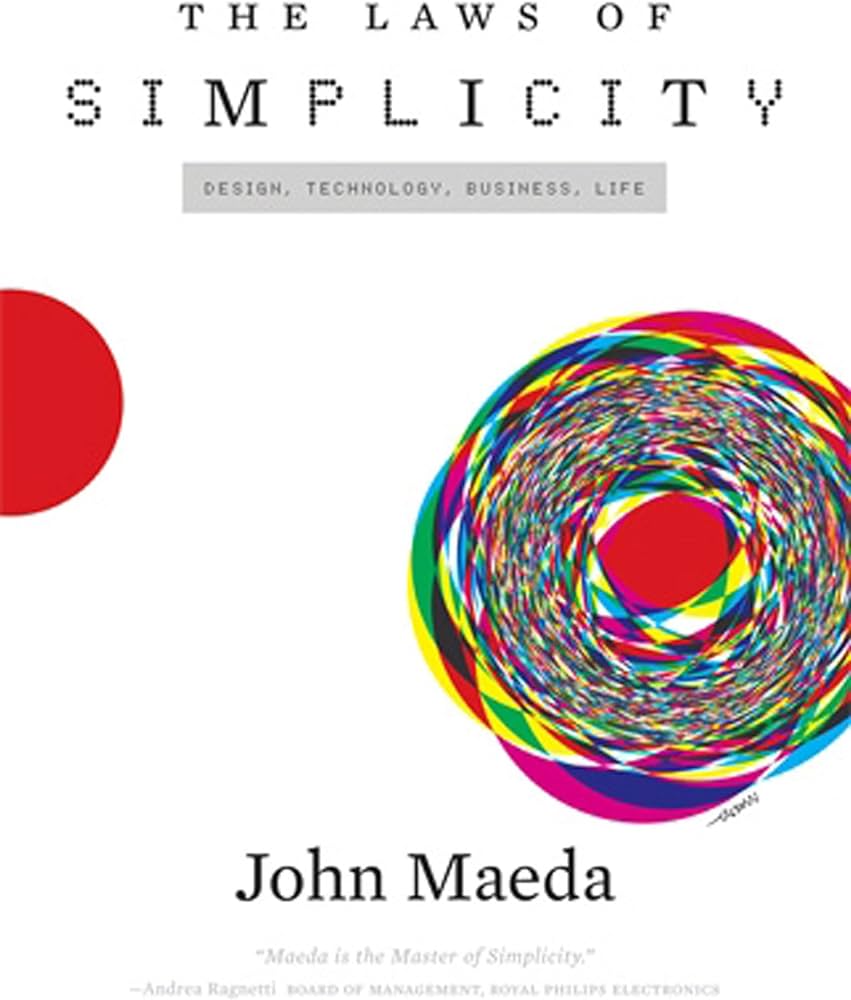
Review
I really love the concept of simplicity and I think about it often. This book was full of promise for me, but it didn’t deliver. The early laws are great, and there’s some real actionable advice there. I found the quality of thinking and clarity tailed off. I lost faith in the author at some point in the second half.
There are better design books out there. ‘The design of everyday things’ is a much better place to start.
Key Takeaways
The 20% that gave me 80% of the value.
- The 10 Laws of simplicity:
- Reduce: the simplest way to achieve simplicity is through thoughtful reduction
- Shrink: make it small, this lowers expectations. Make it appear delicate and fragile (lightness and thinness). Smaller, lesser, humbler. Move value is delivered than originally expected.
- Example: iPod fits in your hand, mirrored back made it seem smaller
- Hide: hide the complexity. Hide it until you need it. It’s a form of deception. Complexity becomes a switch the owner can flip.
- Example: the clam shell phone, the menu bar.
- Embody: perception of quality becomes important after shrinking and hiding. Less needs to seem like more. Embody quality. You can invest in quality through craftsmanship or marketing (real or perceived).
- Shrink: make it small, this lowers expectations. Make it appear delicate and fragile (lightness and thinness). Smaller, lesser, humbler. Move value is delivered than originally expected.
- Organize: organization makes a system of many appear fewer
- Two questions of decluttering: What to hide? Where to put it?
- To have a stable system though you need to ask… What goes with what?
- Organization makes a system of many appear fewer IF the number of groups is significantly less than the number of items.
- Working with fewer makes life easier.
- What goes with what?
- Sort: find the natural groupings.
- Label: Assign a name
- Integrate: groups that appear significantly like each other
- Prioritize: collect highest priority items into a single set so they receive the most attention
- Use the Pareto principle and focus on the vital few
- Two questions of decluttering: What to hide? Where to put it?
- Time: savings in time feel like simplicity
- Speed is often attributed to the simplicity of the system
- Learn: knowledge makes everything simpler
- Relate, translate, surprise
- Relate: leverage the human instinct to relate
- Translate: the relationship into a tangible object or service
- Surprise: add a little surprise at the end (makes the time feel worthwhile)
- Relate, translate, surprise
- Differences: simplicity and complexity need each other
- Context: what lies in the periphery of simplicity is definitely not peripheral
- There’s a tradeoff between being completely lost in the unknown and completely found in the familiar
- How directed can I stand to feel?
- How directionless can I afford to be?
- Complexity implies the feeling of being lost, simplicity implies the feeling of being found.
- Transitions from simple to complex are key
- There’s a tradeoff between being completely lost in the unknown and completely found in the familiar
- Emotion: more emotions are better than less
- Determine just the right kind of more (add back emotion)
- Be sensitive to how you’re feeling.
Form follows functionFeeling follows form.- Great art makes you wonder. Great design makes things clear.
- Art a reason to live, is tempered with design (clarity of message)
- Achieving clarity isn’t difficult, achieving comfort is harder
- Trust: in simplicity we trust
- The more a system knows about you the less you should have to think
- The more you know about the system, the more control you can exact
- How much do you need to know about a system?
- Effort is required to learn and master
- How much does the system know about you?
- Trust must be offered to the system (and constantly repaid by the system)
- How much do you need to know about a system?
- Failure: some things can never be made simple
- The one: simplicity is about subtracting the obvious, and adding the meaningful
- Reduce: the simplest way to achieve simplicity is through thoughtful reduction
- Three Keys
- Away: more appears like less by simply moving it far, far away
- Open: openness simplifies complexity
- Power: use less, gain more